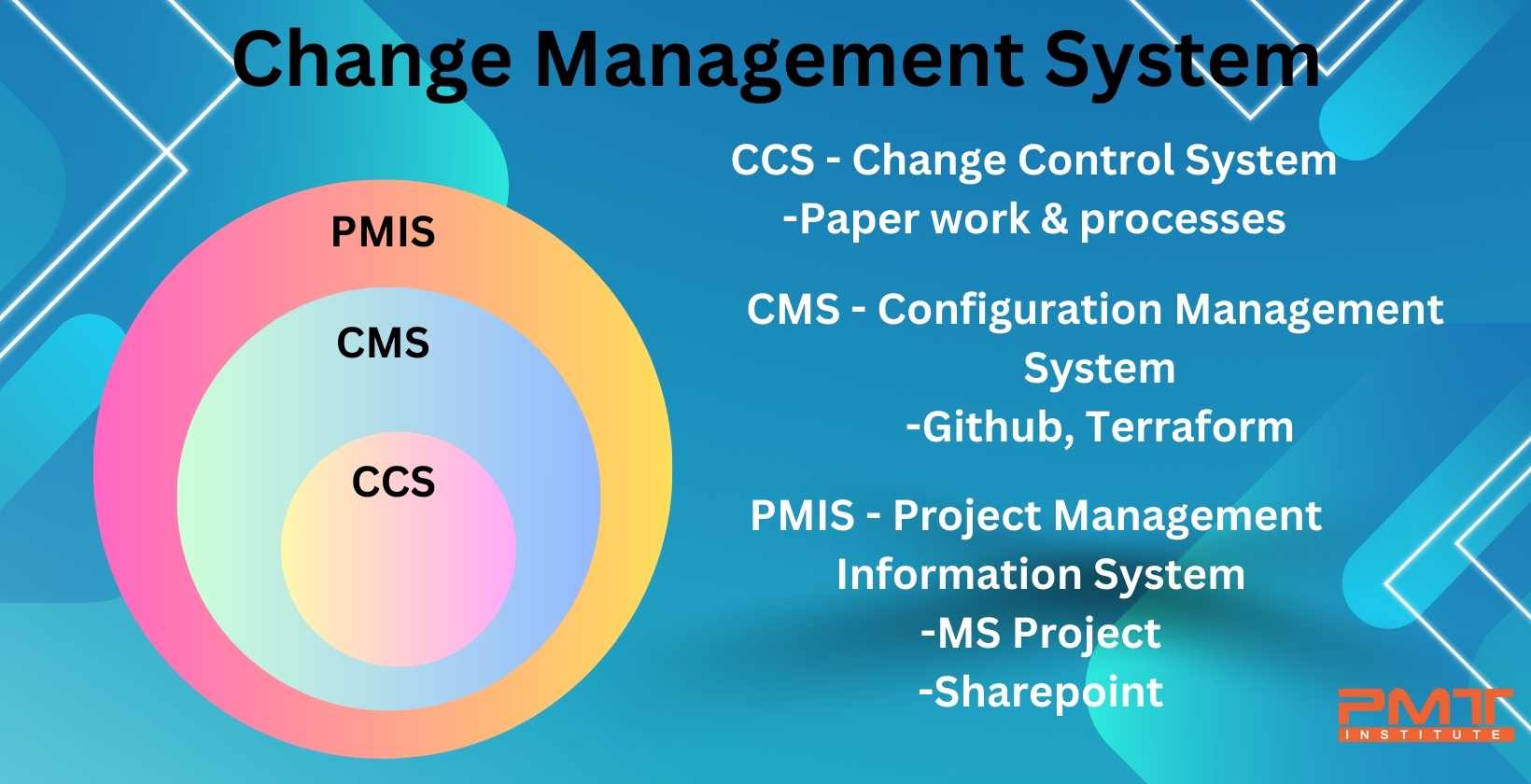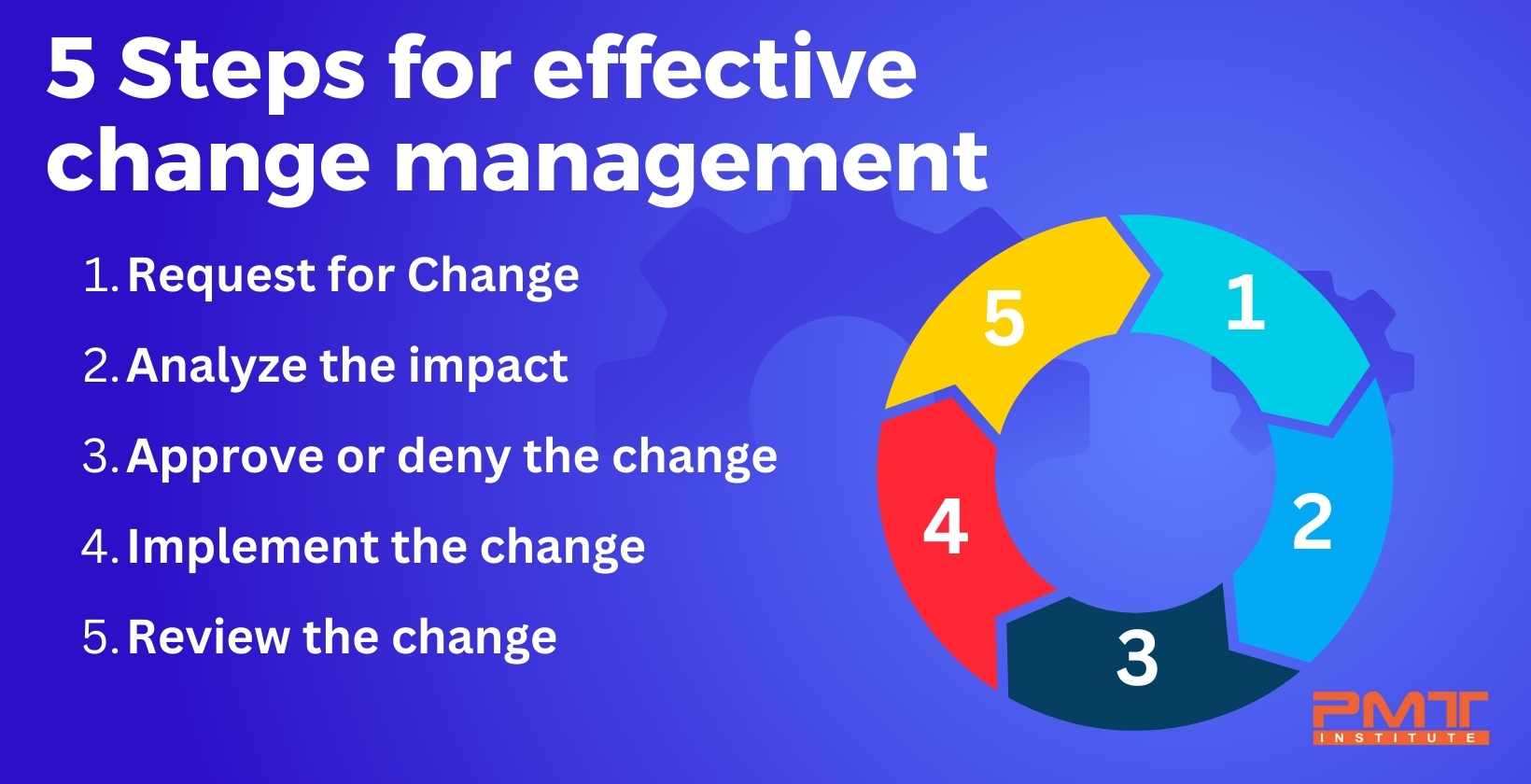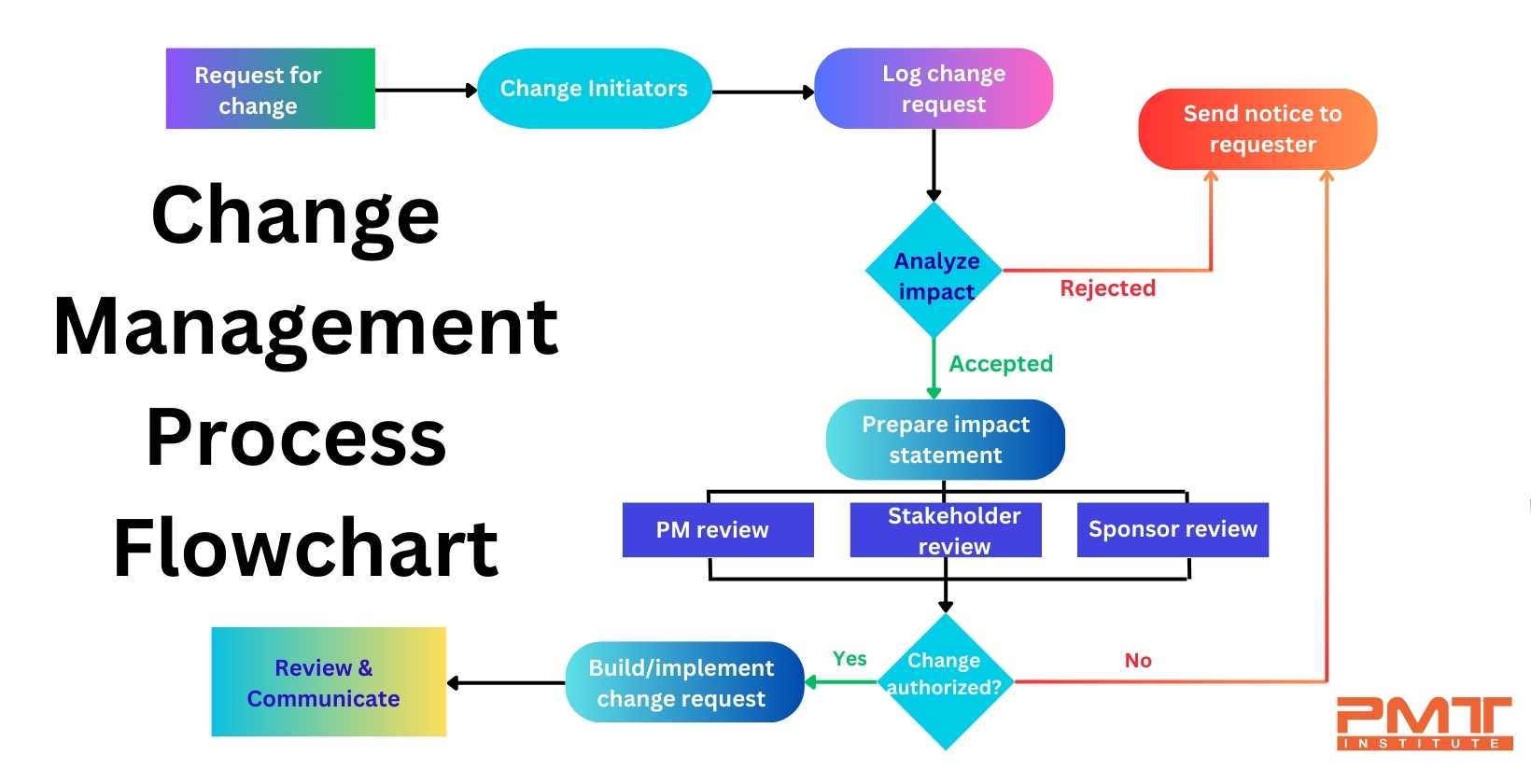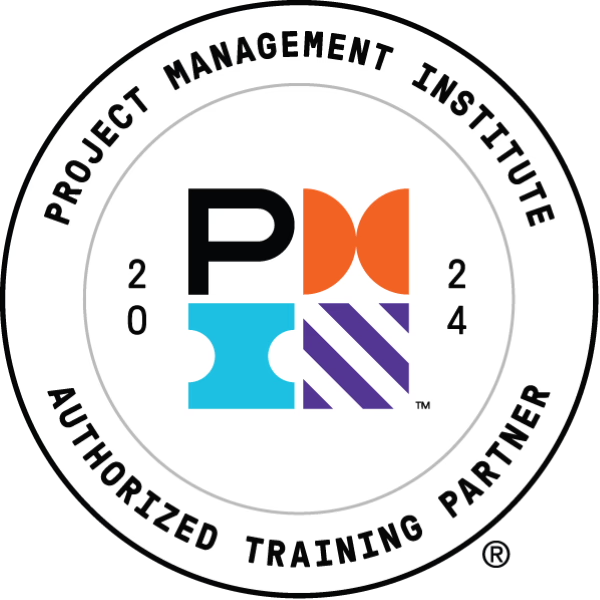Understanding the Change Management Process: A Comprehensive Guide

Yad Senapathy, PMP April 11, 2024
Introduction
Change Management represents a structured approach to shifting individuals, teams, and organizations from a current state to a desired future state. It is a critical part of project management that ensures changes are implemented smoothly and successfully. This guide delves into the essentials of the change management process, highlighting its importance in today's dynamic business environment.
What is Change Management?
Change Management is the application of methods and tools to manage the people side of change from its current state to its future state. It helps an organization to plan for change, control the change process, and effectively implement change. This approach is crucial for minimizing resistance to change and achieving the benefits of new strategies, processes, and technologies.
Change Management is the art and science of driving organizational change. It involves understanding, managing, and supporting employees through transitions, ensuring the organization can evolve without disruption. John Kotter, a professor at Harvard Business School and a leading thinker in change management, once said, "Leadership involves identifying the need for change, creating a vision to guide that change, and executing the change effectively." This encapsulates the essence of change management: guiding people through new beginnings with purpose and direction.
Objectives of Change Management
The road to successful change is paved with clear objectives. These include:
Streamlining Change Requests:
Like how a GPS system guides a driver to their destination, the change management process ensures every change request is tracked from start to finish. For example, when a technology firm introduces a new software tool, managing this change effectively means ensuring the tool is integrated smoothly, addressing any technical issues promptly, and training staff to use it efficiently.Aligning Changes with Business Goals:
Every change should steer the organization closer to its strategic objectives. If a company aims to improve customer satisfaction, introducing a change in the customer service process must be aligned with this goal, enhancing the overall customer experience.Effective Communication:
Transparency is key. Consider the case of a company restructuring where communicating the reasons for the change, the benefits, and how it will be implemented can significantly reduce employee anxiety and resistance.Efficiency in Minor Changes:
Simplifying the process for minor changes can significantly reduce workload and streamline operations, akin to how a software update runs in the background without disrupting user experience.
Scope of Change Management
The scope of change management is vast, encompassing everything from minor adjustments to major shifts in business strategy. A relatable example is the global shift to remote work during the COVID-19 pandemic. Companies had to quickly adapt their operations, communication channels, and employee support systems to maintain productivity and morale.
Change Management vs. Project Management
While project management focuses on the 'what' and 'how' of projects, change management zeroes in on the 'who'—the people affected by the change. An example of this distinction can be seen in the rollout of a new customer relationship management (CRM) system. Project management would cover the system's selection, installation, and technical testing, whereas change management would focus on getting employees up to speed with the new system, addressing their concerns, and ensuring it's used effectively across the organization.
Key Components of the Change Management Process
The change management process can be likened to a journey, with each step critical to reaching the destination:
-
Change Identification:
Just as a navigator identifies the route, stakeholders spot the need for change. For instance, a decline in product sales might trigger a reevaluation of marketing strategies. Change Request (CR) Management:
Every change is thoroughly documented, analyzed, and decided upon, akin to assessing the impact of a new route on travel time and cost.Change Control Board (CCB):
This board reviews and approves changes, ensuring they align with organizational goals, much like a council deciding on a city's development plans.Change Log:
Maintaining a record of changes is like keeping a travel log; it helps track progress and understand the journey's impact.Change Implementation:
Implementing approved changes is the final leg of the journey, where planning turns into action, and the organization moves forward.
In-Depth Steps for Managing Change Requests

The process is meticulous, ensuring every detail is considered:
-
Identify New Change Request:
Like identifying a need for a new route due to road closure. Impact Analysis of CR:
Assessing how the change will affect the project, similar to evaluating a detour's impact on travel time.Document CR:
Detailed documentation, as one would record the specifics of a new route.Present CR to the CCB:
Bringing the change request before a decision-making body, akin to presenting a case to a board.Take Decision on CR:
The board's decision on the change, much like city council approval for new road construction.Convey Decision to Stakeholders:
Informing everyone affected by the change, ensuring transparency and preparation.Implement Approved Changes:
The actual execution of the change, moving the organization forward.
Let’s look at some basic definitions of project changes and related terms
Change
A change denotes a proposed alteration to any aspect of a plan, document, work product, deliverable, or artifact within a project. It necessitates approval from the Change Control Board (CCB) before implementation is undertaken.
Change Request (CR)
A formally documented proposal submitted to the CCB for deliberation and decision regarding a proposed change. The CR document encapsulates a thorough description of the change, accompanied by a meticulous impact analysis.
Types of change requests
Preventive Action
Deliberate activities intended to align future project performance with the defined project management plan.
Corrective Action
Intentional initiatives aimed at realigning future project performance with the parameters of the established project management plan.
Defect Repair
Purposeful actions to modify a non-conforming product or component. While a change is distinct from a defect, repairing defects may necessitate a change request.
Change Control Board (CCB)
A formally recognized entity entrusted with the authority to deliberate and make decisions on CRs. The CCB undertakes the review, evaluation, and determination of changes, with the prerogative to approve, partially approve, or reject CRs. The composition and structure of the CCB can vary, potentially encompassing a single individual or a multi-member body. It is noteworthy that the Project Manager (PM) may or may not be part of the CCB. The PM's responsibility lies in documenting and communicating CCB decisions to pertinent stakeholders.
Change Log
An exhaustive inventory cataloging all changes, complete with associated attributes. Attributes can encompass current status, responsibilities, dates, and more. Typically, the PM maintains the Change Log.
Change Management
A comprehensive process encompassing the identification, documentation, analysis, and decision-making (approval, partial approval, rejection) of changes. This process is inherently tailored to the specifics of each organization, often leveraging both manual and automated tools for effective change management.
Change Management Plan
A formal document delineating the prescribed change management process. It articulates how project changes will be identified, documented, analyzed, decided upon, monitored, and controlled. The contours of the Change Management Plan are usually informed by the overarching change management guidelines established within the organization.
Perform Integrated Change Control and the Flow of Change Requests

The Perform Integrated Change Control process represents a pivotal phase involving the review, approval, and management of changes. This dynamic process permeates the entire project lifecycle, contributing to its seamless evolution.
The subsequent schematic delineates the interplay between the PMBOK Guide's Perform Integrated Change Control process and other integral processes. It elucidates the trajectory of a change request as it traverses various PMBOK Guide processes.
- A Change Request (CR) materializes as an output of most Executing processes and all Monitoring & Controlling processes.
- The PICC Process serves as the entry point for a CR, initiating its evaluation and decision-making journey.
- Within the PICC Process, the Change Control Board (CCB) deliberates upon CRs, rendering determinations that encompass approval, partial approval, rejection, or temporary suspension.
- Approved changes and the Change Log emerge as outputs of the PICC Process.
- Approved changes then cascade into the Direct & Manage Project Work (D&MPW) process, where their implementation is orchestrated.
The plan operates as a subsidiary component of the comprehensive Project Management Plan. While the Project Manager (PM) may or may not be a CCB member, adherence to the CMP guidelines remains an essential obligation for effective execution.
Guidelines/Steps for Managing Change Request
| Step Number | Step Description | Responsible Parties |
|---|---|---|
| 1 | Identify new change request | Any stakeholder |
| 2 | Impact analysis of change request | Project manager, Project team members |
| 3 | Document the change request in change log | Project manager, Project team members |
| 4 | Present change request to Change Control Board (CCB) | Project manager, Project team members |
| 5 | Take decision on change request | Change Control Board (CCB) |
| 6 | Convey decision on change request to the stakeholder(s) | Project manager |
| 7 | Implement approved changes | Project team members |
Step I – Identification of New Change Request
Executed by: Any stakeholder, whether within or outside the project team, can identify a change request (CR).
Step II – Impact Analysis of Change Request
Performed by: The Project Manager (PM) and/or designated Project Team members conduct a comprehensive impact analysis of the CR. This analysis assesses the potential effects of the change on various project elements such as scope, schedule, and cost.
Step III – Documentation of Change Request
Carried out by: The Project Manager and/or Project Team members meticulously document the CR, including potential alternatives and suggested solutions to address the proposed change.
Note: In many instances, Step II (Impact Analysis) and Step III (Documentation) are concurrently undertaken due to their interconnected nature.
Step IV – Presentation of Change Request to the Change Control Board (CCB)
Handled by: The Project Manager and/or Project Team members present the documented CR to the members of the Change Control Board (CCB). They provide a comprehensive explanation of the change's potential impact on diverse project objectives.
Note: Note: The Project Manager might also be a member of the CCB.
Step V – Decision-Making on Change Request
Managed by: The Change Control Board (CCB) takes decisive action on the CR, which may involve full approval, partial approval, rejection, request for re-documentation, or deferment of the decision.
Step VI – Communication of Decision to Stakeholders
Handled by: The Project Manager and/or Project Team members accurately document and communicate the decision made by the CCB to the relevant stakeholders.
Step VII – Implementation of Approved Changes
Executed by: The Project Manager and/or Project Team members implement the changes that have received approval.
Change Management Tools and Software: Empowering Effective Change
In the digital age, leveraging technology to manage organizational change is not just an option; it's a necessity. From comprehensive platforms that oversee the entire change process to specialized tools designed for specific tasks, the right software can significantly enhance the efficiency and effectiveness of your change management efforts. Here are some of the top change management tools and software available in the market:
1. Prosci ADKAR Model & Tools
Prosci's ADKAR Model is a goal-oriented change management model that guides individuals and organizations through the change process. Prosci also offers a suite of tools designed to implement this model, including assessments, training programs, and workshops to facilitate individual and organizational change.
Features and Benefits:
- Structured framework for managing change.
- Emphasis on individual change as a component of organizational change.
- Wide range of tools and resources for change management professionals.
2. ChangeScout (Deloitte)
ChangeScout is a cloud-based change management tool developed by Deloitte. It enables organizations to plan, execute, and track change initiatives. Its real-time analytics and insights help managers make data-driven decisions.
Features and Benefits:
- Comprehensive change management planning and tracking.
- Real-time analytics for informed decision-making.
- Integration with existing HR systems for seamless operation.
3. ServiceNow Change Management
ServiceNow offers a change management module as part of its cloud-based platform that automates IT service management (ITSM). It's designed to minimize IT risks, reduce disruption, and speed up the implementation of IT changes.
Features and Benefits:
- Automation of change processes to reduce errors and save time.
- Risk assessment capabilities to ensure smooth transitions.
- Integrated with ITSM for a unified approach to IT changes.
4. BMC Helix Change Management
BMC Helix Change Management is part of the BMC Helix ITSM suite, providing automated change management processes that support best practices like those outlined in ITIL. It's designed to help organizations manage changes with minimal risk and disruption.
Features and Benefits:
- Automation of change requests and deployment processes.
- Comprehensive dashboards for monitoring change impact.
- ITIL-compliant practices for best-in-class service management.
5. Freshservice
Freshservice is an online ITIL-ready change management solution that offers a fresh take on IT services. It's designed to help businesses streamline their IT service delivery and manage changes efficiently.
Features and Benefits:
- Simple, user-friendly interface.
- ITIL-ready for standard service management practices.
- Automation and AI capabilities to enhance service delivery.
6. Airtable
While not exclusively a change management tool, Airtable can be highly effective for managing change projects. Its flexible spreadsheet-database hybrid structure allows for the customization of workflows, project plans, and collaboration among teams.
Features and Benefits:
- Highly customizable to fit various change management needs.
- Integrations with a wide range of apps and services.
- User-friendly interface with powerful collaboration features.
Choosing the right change management tool or software depends on your organization's specific needs, size, and the complexity of the change initiatives. Whether you're implementing new technology, undergoing a cultural shift, or updating processes, these tools can provide the structure, support, and insights needed to navigate change effectively. By leveraging these solutions, organizations can streamline their change management processes, enhance communication, and increase the likelihood of successful change adoption.
Conclusion
Change Management is a vital process for any organization aiming to navigate the complexities of today's business landscape. By following the structured approach detailed in this guide and embracing change as a strategic asset, organizations can not only survive but thrive amid constant change. As the saying goes, "The only constant in life is change." Embracing this concept through effective change management can lead organizations to unprecedented success.


 Leaders in PM industry for 20+ years
Leaders in PM industry for 20+ years Verified PMI Authorized Training Partner
Verified PMI Authorized Training Partner Pioneers of 100% pass guarantee
Pioneers of 100% pass guarantee
 Authorize.Net trusted transactions
Authorize.Net trusted transactions Satisfies 35 contact hours
Satisfies 35 contact hours




